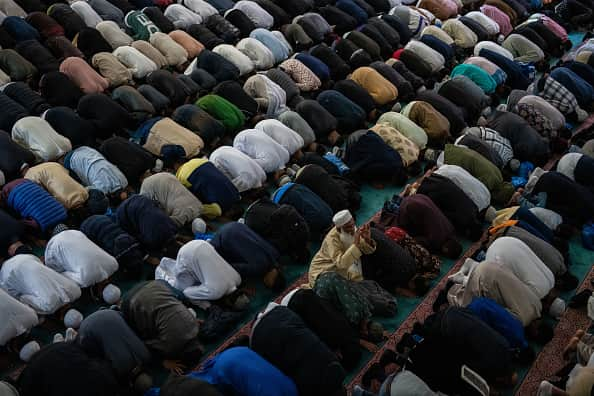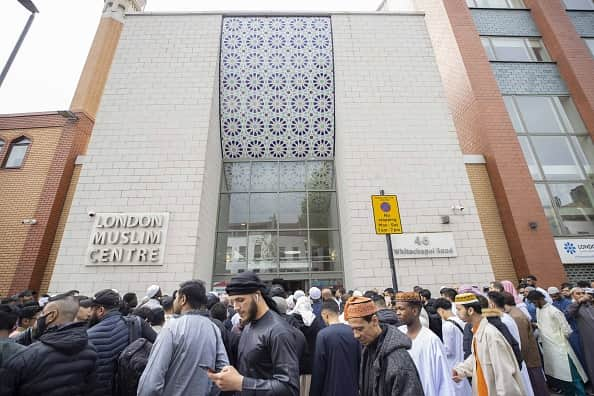Eid al-Fitr 2023: When is the moon sighting, when is Eid in the UK - how do you wish happy Eid
As the month of Ramadan comes to a close, Muslims around the world eagerly await news of the sighting of the new moon this week, as it marks the end of the holy month and the start of Eid al-Fitr, which is centred around a large feast.
In many parts of the world, dedicated teams of moon-sighters scanned the sky with telescopes and binoculars, hoping to catch a glimpse of the elusive crescent moon. The arrival of Eid al-Fitr in the month of Shawwal - the 10th month in the Islamic calendar, signals the completion of the fasting month.
Advertisement
Hide AdAdvertisement
Hide AdLike Ramadan and other Muslim observances, the timing of Muslim months and holidays however, generally depends on the lunar cycle, especially the sighting of the Moon’s crescent following the new Moon.
Because the new Moon’s visibility depends on clear skies and several other factors, the exact date of Muslim holidays cannot be predicted with certainty or too far in advance. According to Timeanddate.com, the holiday may also fall on different dates according to a country’s longitude and time zone.
Depending on their country of origin, religious orientation, or cultural affiliation, some Muslims may, therefore, celebrate the holiday typically one day earlier than others. So when will Eid al-Fitr be celebrated in the UK? Here’s everything you need to know.
When is Eid al-Fitr in the UK 2023
UPDATE: Some regions in the UK have announced Eid al-Fitr will fall on Friday (April 21), following the announcement of the Supreme Court of Saudi Arabia.It said in a tweet: “Royal Court: The Supreme Court announces that tomorrow, Friday, is the first day of Eid Al-Fitr 1444 Hijri.”
In the UK, Ramadan 2023 began on March 22 at sunset, as determined by the lunar calendar. The end of the fasting month is signalled by the sighting of the next crescent moon, which occurs between the 29th and 30th day of the holy month.
Scholars will search for the moon on the 29th of the month, which is Thursday (April 20) for those who began fasting on March 23, and Friday for those who began Ramadan a day later like in India and Bangladesh.


The Shawwal crescent moon - which marks the end of the Ramadan fast - has been sighted in Saudi Arabia, meaning that Eid Al-Fitr will be celebrated in the UK on Friday April 21.
What is Eid al-Fitr?
Eid al-Fitr is derived from an Arabic phrase that means "feast of breaking the fast". While it is not a common public holiday in the UK, it is for many Muslim nations. The festivities start with morning prayers, which are typically held at a mosque. Eid features a unique prayer that is meant to be recited in congregation.
Advertisement
Hide AdAdvertisement
Hide AdMuslims typically congregate in parks for large-scale celebrations after the prayers. Some Muslims choose to fast for the six days that come after Eid. This is due to the Islamic notion that good conduct in Islam is rewarded 10 times, therefore fasting for six days during Shawwal and 30 days during Ramadan generates goodwill equivalent to a year.
Eid al-Adha, the second Eid celebration in the Islamic calendar, takes place later in the year. Literally meaning "feast of the sacrifice," it is regarded as the more sacred of the two Eids.
It celebrates the account of Prophet Ibrahim, also known as Abraham in the Old Testament, sacrificing his son in accordance with God’s mandate.
Depending on the country, the celebrations of Eid al-Adha can last anywhere between two and four days. The act of sacrifice (Qurbani) is carried out following the Eid prayers, which are performed in congregation at a mosque on the morning of Eid.
The act of sacrifice consists of slaughtering an animal as a sacrifice to mark this occasion in remembrance of Prophet Ibrahim’s sacrifice for God.


How do you wish for a Happy Eid?
It is customary to say "Eid Mubarak" during both Eid al-Fitr and Eid al-Adha celebrations. "Eid Mubarak" means "blessed celebration" or "blessed feast" because the Arabic word "mubarak" translates as "blessed," and the word "Eid" implies feast, festival, or celebration.
However, it is typically understood to mean only "Happy Eid" wishes. While "Eid Mubarak" is more than sufficient, you can also say "Eid al-Fitr Mubarak" or "Eid al-Adha Mubarak" to distinguish between the two holidays.
Comments
Want to join the conversation? Please or to comment on this article.
